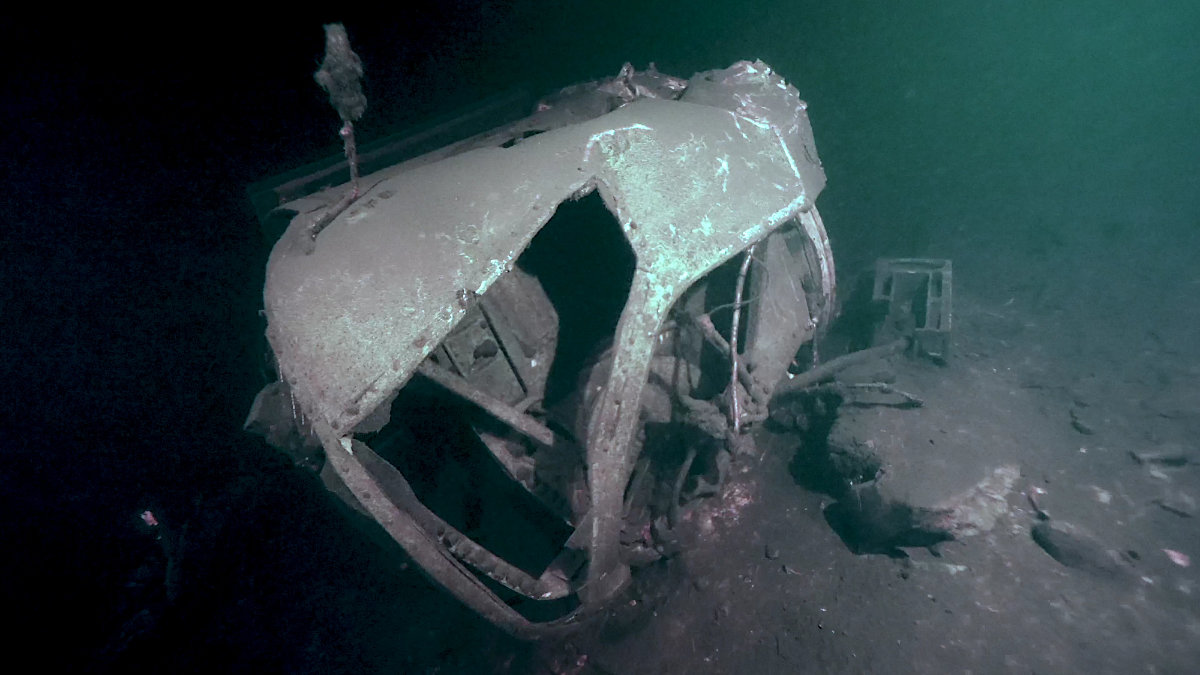In 1943, German U-boats were sinking Allied shipping in the Battle of the Atlantic. In response, the Royal Canadian Air Force had Liberator bombers from No. 10 Bomber Reconnaissance Squadron in Gander, Newfoundland flying anti-submarine patrols over the northwest Atlantic in an effort to protect the shipping convoys.
Just before midnight on September 3, 1943, Liberator 589 “D” took off from Gander Air Station on a night practice flight. The pilot, Wing Commander John Young, and co-pilot, Flying Officer Victor Bill, wanted to get more night flying experience in the Liberator patrol aircraft. They were joined by aero-engine crewman Leading Aircraftman Gordon Ward and a medical researcher Squadron Leader Grant MacKenzie. Disaster struck seconds after take-off when power was lost from one of the plane’s four engines. Witnesses saw the bomber barrel-roll several times and crash into Gander Lake. All four men aboard were killed.
Hard-hat divers from the Royal Canadian Navy were flown into Gander and spent 10 days trying to recover the plane wreck from the bottom of the lake and the bodies of the aircrew. They only managed to recover the body of Grant MacKenzie but not the others or the plane wreck itself.
Seventy-nine years after the plane crash, research by Tony Merkle of the Shipwreck Preservation Society of Newfoundland & Labrador (SPSNL) uncovered the probable location of the plane crash in Gander Lake. SPSNL member Kirk Regular was able to conduct to conduct a multibeam sonar survey of the wreck site, while doing other survey work in Gander Lake for the Marine Institute and New Found Gold Corp. Kirk successfully located and collected sonar images of the bomber wreckage on the bottom of the lake. A Marine Institute colleague, Adam Templeton, was then able to collect underwater video of the plane wreck using a remotely operated vehicle (ROV).
Having discovered the wreck’s location, scuba divers from SPSNL were joined by technical divers and underwater film-makers from the Great Island Expedition, hosted by Ocean Quest Adventures. The team dived on the plane wreck and collected photos and videos in early September 2022. The diver surveys revealed the aircraft’s wings, forward fuselage and landing gear. The plane wreck was upside-down on the lake bottom. The four engines, the rear fuselage and the tail were not found. Further diver surveys in October 1922 added one propeller to the wreck site, near the starboard wingtip.
SPSNL thanks New Found Gold Corp. for their generous sponsorship of our efforts to locate and document this underwater plane wreck. We also thank the Marine Institute, Ocean Quest Adventures, the Great Island Expedition and the Royal Canadian Geographic Society for their contributions to this research.


























